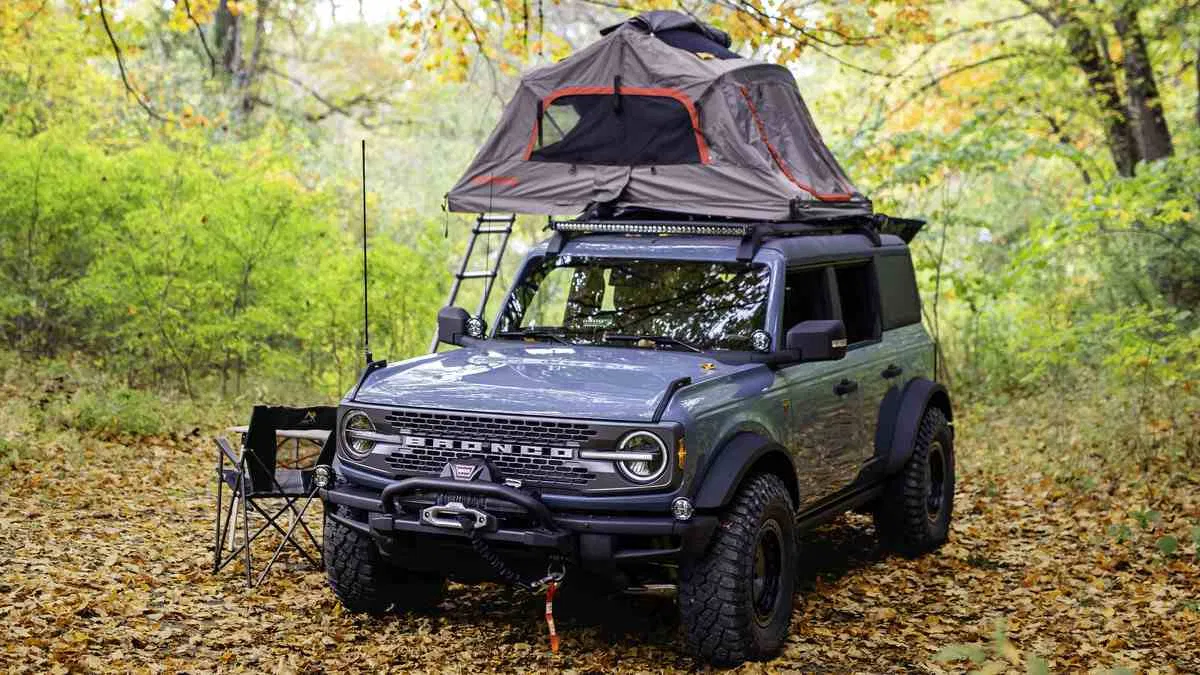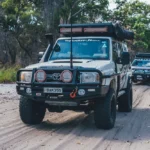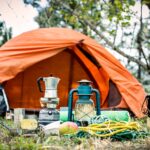Overlanding is the ultimate way to explore remote landscapes, experience off-road adventure, and connect with nature. However, traveling in isolated regions, often far from immediate help, comes with inherent risks. Whether you’re a beginner venturing into the world of overlanding or a seasoned 4×4 enthusiast exploring challenging terrain, understanding and implementing overlanding safety tips is crucial. This guide provides an in-depth look at essential safety gear, emergency planning strategies, and safe overland practices to ensure your adventures remain secure, enjoyable, and unforgettable.
Understanding the Importance of Safety in Overlanding
The thrill of overlanding lies in independence and adventure, but it also involves unique challenges. Off-road routes can be unpredictable, weather conditions may change rapidly, and medical help or rescue services might be hours—or even days—away. Being unprepared can lead to vehicle damage, injuries, or life-threatening situations.
Key reasons safety is critical in overlanding:
- Remote areas often have limited cell coverage, making communication difficult.
- Off-road terrains, such as rocky trails, sand dunes, and rivers, pose vehicle and personal risks.
- Extreme weather can escalate quickly, requiring knowledge and preparation.
- Wildlife encounters can endanger both humans and pets.
Adopting safe overlanding practices ensures you are prepared for emergencies, avoid unnecessary risks off road, and maximize enjoyment. Pre-planning, equipping your vehicle with proper gear, and understanding how to respond in emergencies can save lives.
Essential Safety Gear for Overlanding
Having the right equipment is a cornerstone of safe overlanding. From vehicle recovery gear to personal safety items, preparing properly ensures you can handle unexpected challenges effectively.
Vehicle Safety Equipment
A reliable vehicle is the backbone of any overland journey. Essential vehicle safety gear includes:
- Recovery Gear: Winches, recovery straps, snatch blocks, and traction boards are indispensable for safely recovering a stuck vehicle. For a detailed guide, refer to our Overlanding Recovery Gear: Essential Tools for Off-Road Safety.
- Spare Tires & Tools: Carry at least one spare tire, a jack suitable for your vehicle, and a tire repair kit. Knowing how to change or repair a tire efficiently is crucial.
- Vehicle Maintenance Essentials: Engine oil, coolant, jumper cables, fuses, and basic tools ensure that minor mechanical issues don’t turn into major setbacks.
- Lighting & Visibility: High-quality headlights, fog lights, and emergency hazard lights improve safety during nighttime driving or poor visibility conditions.
Proper vehicle preparation minimizes breakdown risks and allows you to handle emergencies effectively.
Personal Safety Equipment
Personal safety gear protects you directly from injuries and ensures your survival in emergencies:
- First Aid Kits: Include bandages, antiseptic, pain relievers, blister treatments, and specialized items for extreme conditions. Update the kit regularly.
- Communication Devices: Satellite phones, two-way radios, or GPS messengers are vital in areas without cellular coverage.
- Protective Clothing: Durable, weather-appropriate clothing, gloves, and helmets enhance safety in rough terrain.
- Personal Safety Tools: Emergency whistles, personal locator beacons, and headlamps increase visibility and signaling capability.
Navigation & Emergency Gear
Proper navigation and emergency equipment are essential for avoiding hazards and staying oriented:
- GPS Units & Maps: A high-quality GPS device combined with physical topographic maps ensures reliable navigation even if electronics fail.
- Compass: An indispensable tool when technology is unavailable.
- Overland Emergency Kit: Includes water purification devices, extra food, fire starters, blankets, and signaling devices like flares or mirrors.
Using these tools together reduces the likelihood of getting lost and ensures you can respond to emergencies effectively.
Emergency Planning for Overlanders
Even with the best gear, emergencies can occur. Thoughtful emergency planning allows you to stay safe and make informed decisions under pressure.
Pre-Trip Planning
Preparation begins long before the journey starts:
- Route Research: Study trails, terrain difficulty, and weather forecasts. Use GPS tracks and local guides for safer planning.
- Itinerary Sharing: Provide a detailed trip plan to a trusted friend or family member, including estimated arrival times and key waypoints.
- Permits & Regulations: Check local regulations, park permits, and off-road restrictions to avoid fines or hazards.
Communication & Checkpoints
- Satellite Messengers: Devices like Garmin inReach allow for two-way communication in remote areas.
- Regular Check-ins: Schedule periodic updates to someone monitoring your journey.
- Emergency Contacts: Keep a list of local emergency services, rescue teams, and nearby medical facilities.
Handling Vehicle or Health Emergencies
- Vehicle Emergencies: Use recovery gear properly, avoid unnecessary risk, and follow safety protocols when freeing a stuck vehicle.
- Medical Emergencies: Stabilize injuries using your first aid kit and contact emergency services promptly.
- Evacuation: Know the fastest route to civilization and carry necessary tools to navigate challenging terrain safely.
Safe Overlanding Practices on the Road
The way you drive and behave off-road greatly impacts safety. Following safe overlanding practices reduces risks and ensures smooth adventures.
Driving Techniques for Safety
- Controlled Speed: Maintain speeds suitable for terrain and visibility.
- Correct Lines: Plan your path over obstacles, avoiding sudden maneuvers that could destabilize your vehicle.
- Environmental Awareness: Watch for soft sand, loose gravel, water crossings, or wildlife.
Nighttime and Weather Considerations
- Avoid overlanding at night whenever possible.
- Use headlights, reflective markers, and caution when visibility is low.
- Be prepared for sudden weather changes, including storms, flooding, or extreme temperatures.
Safe Camping Overland
Overlanding often involves camping in remote locations. Safe camping overland ensures personal security and environmental preservation.
Choosing Campsites
- Select flat, elevated ground to avoid flooding.
- Avoid animal trails, unstable cliffs, or areas prone to landslides.
- Ensure a reliable water source is nearby but safe from contamination.
Camp Setup & Security
- Secure tents and awnings to prevent accidents during strong winds.
- Use fire pits safely and keep flammable materials away.
- Store food securely to avoid attracting wildlife.
Checklists for Overlanding Safety
A structured checklist ensures nothing is overlooked:
Vehicle Safety Checklist:
- Recovery gear, spare tire, tools, lighting.
- Engine oil, coolant, battery, and fuses.
Personal Safety Checklist:
- First aid kit, communication devices, protective clothing.
- Emergency signaling tools and personal locator beacons.
Overland Emergency Kit Checklist:
- Water purification, non-perishable food, fire starters.
- Blankets, extra clothing, navigation tools.
Pre-Trip Inspection Checklist:
- Tire pressure, fluid levels, lights, and brakes.
- Secure cargo and fuel supplies.
FAQs About Overlanding Safety
1. What essential gear should every overlander carry?
Every overlander should have vehicle recovery gear, a comprehensive first aid kit, GPS and maps, communication devices, and an overland emergency kit.
2. How can I stay safe in remote areas?
Plan your route, check weather forecasts, maintain communication, and ensure your vehicle and personal gear are prepared for emergencies.
3. What’s included in an overland emergency kit?
An overland emergency kit typically includes water purification tools, non-perishable food, blankets, fire starters, signaling devices, and basic repair tools.
4. How do I prevent accidents off-road?
Drive at controlled speeds, choose safe lines over obstacles, maintain awareness of your surroundings, and follow terrain-specific safety techniques.
5. How often should I update my overlanding safety gear?
Inspect and update gear before every trip, replacing expired first aid supplies, worn recovery straps, and malfunctioning tools.
Conclusion & Call to Action
Safety is the cornerstone of every successful overlanding adventure. By equipping yourself with the proper safety gear for overlanding, planning for emergencies, and following safe overlanding practices, you can explore remote regions with confidence. Remember, preparation not only protects your life but enhances the enjoyment of your journey.
For an in-depth guide on vehicle recovery gear and essential tools, visit our detailed article: Overlanding Recovery Gear: Essential Tools for Off-Road Safety.
Take action today—invest in the right gear, plan your routes carefully, and ensure your next overland adventure is safe, secure, and unforgettable.








